The 10 Benefits of 3D VR Panoramic Renderings
The digital age has continuously sought to challenge the limitations of reality, and nowhere is this more clear than in the rise of 3D VR Panoramic Renderings. At its core, 3D VR (Virtual Reality) Panoramic Rendering is a technique that offers a full 360-degree view of a rendered environment, allowing the viewer to immerse themselves fully within a virtual space. Unlike traditional 2D images or even standard 3D renderings, this technology encapsulates the viewer, creating an illusion that they are 'inside' the digital scene, turning their head and viewing the environment just as they would in the real world.
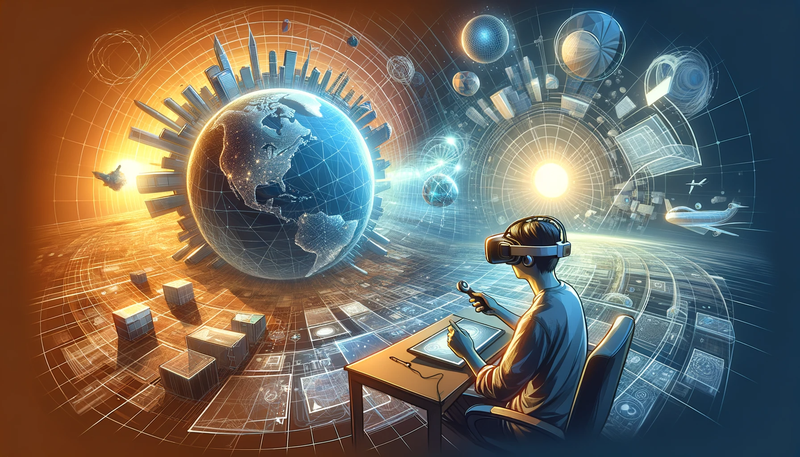
Virtual Reality, as a broader field, has taken significant strides over the past few decades. Once just a figment of science fiction imagination, VR has manifested into tangible, sophisticated technology. From rudimentary polygon shapes in the early '90s to the ultra-realistic simulations today, VR's growth has been nothing short of revolutionary. VR's role has become indispensable across diverse sectors—from gaming to architecture, from education to medicine—transforming traditional methods of innovative experiences.
Historical Context
To understand the meteoric rise of 3D VR Panoramic Renderings, it's essential to venture back to the roots of 3D rendering. In its earliest incarnations, 3D rendering was a tool used to create static, albeit three-dimensional, images on two-dimensional screens. These visuals, while a significant advancement from 2D graphics, lacked the interactive or immersive quality. They offered depth and perspective but couldn't 'enter' or 'experience' the scenes.
As technology advanced, driven by the demands of the video gaming industry and cinematic visual effects, 3D rendering techniques grew in complexity and realism. We started seeing the world not just in 3D but with lifelike textures, dynamic lighting, and accurate physics. Yet, even with these advancements, the experience remained predominantly passive.
Enter the world of Virtual Reality. With the promise of immersion, VR began as rudimentary headsets with limited graphical prowess, merely hinting at the potential of a fully immersive digital experience. However, as graphic hardware became more powerful and software algorithms more sophisticated, the marriage between 3D rendering and VR became a clear next step.
The inception of 3D VR Panoramic Renderings marked a significant leap. This wasn't just viewing a 3D model on a screen; it was about stepping inside it. This progression from simple 3D graphics to panoramic VR wasn't just a technological evolution—it was a paradigm shift. It changed how professionals approached design, storytelling, training, and more, paving the way for an era where we wouldn't just see digital worlds but be a part of them.
Benefit #1: Immersive Experience
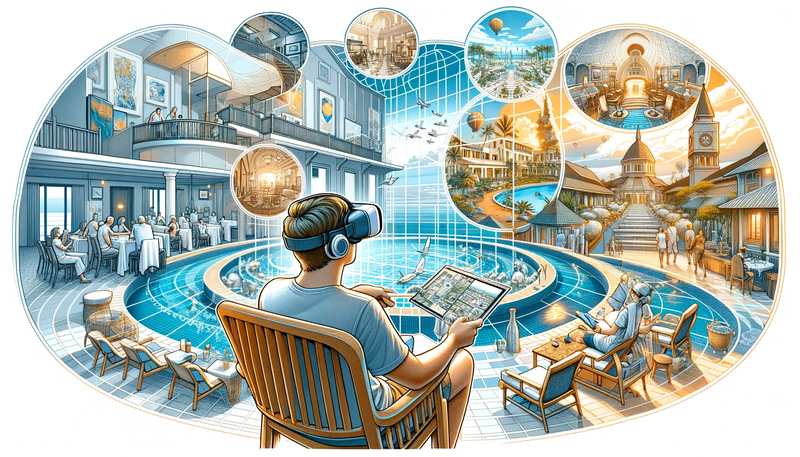
One of the most significant advantages of 3D VR Panoramic Renderings is its unparalleled immersion level. The word "immersive" is often used liberally in the realms of digital technology, but with VR, it takes on a wholly transformative meaning. In a VR environment, you don't just look at a scene; you are part of it. Unlike 2D or standard 3D renderings, which offer a passive, framed view of an environment, VR's panoramic capabilities envelope the viewer in a 360-degree virtual world, making the experience genuinely interactive.
The applications of such an immersive experience are vast and varied. Consider property tours, for example. Traditional methods required prospective buyers to either visit in person or rely on 2D photos or videos. 3D VR Panoramic tours offer a compelling alternative, allowing individuals to "walk through" a property virtually, gaining a tangible sense of the space, layout, and aesthetic—something inconceivable with mere photos.
Virtual travel is another domain revolutionized by the immersive qualities of 3D VR. Whether it's a historic site, a luxury resort, or a scenic nature retreat, VR panoramic renderings provide an almost-real experience. Museums, too, have adopted VR for virtual tours, allowing people to explore exhibits from the comfort of their homes but with a sense of presence that a 2D webpage simply can't replicate.
Benefit #2: Improved Design Visualization
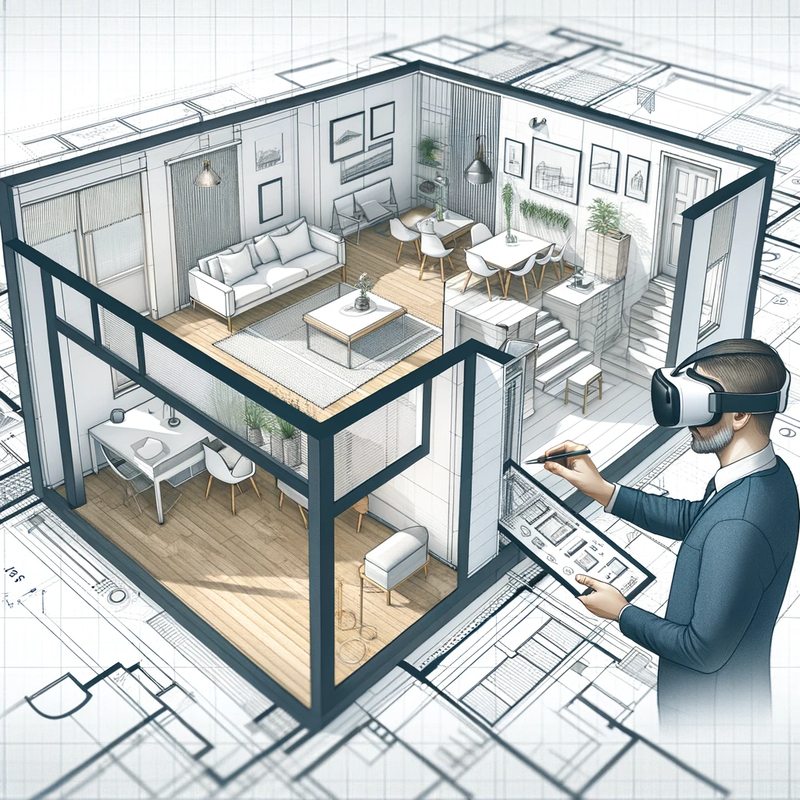
Another compelling benefit of 3D VR Panoramic Renderings is the incredible boost it provides in design visualization. Architects, interior designers, and urban planners often work with 3D models, but these models have limitations. They offer a three-dimensional representation, yes, but they don't allow the viewer to fully "experience" the design in a lifelike manner.
Integrating VR into the design process elevates the whole exercise from mere representation to full-blown simulation. In a VR environment, designers can navigate through the virtual space much like they would in the real world, providing a uniquely tangible sense of scale, proportion, and spatial relationships. This ability to "inhabit" a design before it's brought to life has profound implications.
Perhaps one of the most powerful advantages is the capability for real-time adjustments. During a VR walkthrough, designers can identify shortcomings, miscalculations, or areas for improvement that might not have been apparent through traditional 3D models. This leads to a more efficient and accurate design process, saving both time and money. It allows for instantaneous client feedback. If a client wants to see how a room would look with a different type of flooring or a wall in a different colour, they can change it real time within the VR environment for immediate evaluation.
Both these benefits—immersion and design visualization—represent just the tip of the iceberg regarding the transformative potential of 3D VR Panoramic Renderings. Yet, even by themselves, they offer a compelling argument for why this technology is an incremental improvement and a revolutionary leap forward.
Benefit #3: Cost Savings
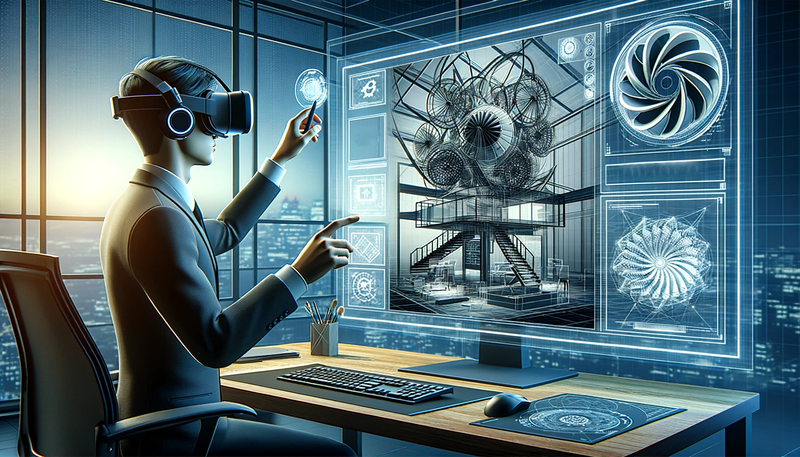
In traditional design and development processes, physical prototypes or mock-ups often serve as a vital step for final evaluations before production. While these methods are undoubtedly effective, they come with a high price tag. Creating physical prototypes involves material costs, labour, and often, specialized machinery. 3D VR Panoramic Renderings offer a compelling alternative that can dramatically cut these costs.
A fully interactive, 360-degree view of the design can be rendered using VR technology, eliminating the need for a physical prototype. This saves on material and labour costs and significantly speeds up the production timeline, further contributing to cost efficiency.
The level of detail and realism achievable in VR panoramas allows designers and project managers to spot potential design errors or issues early. Addressing these issues in a virtual environment is far cheaper and quicker than making corrections at a later stage in a physical model or, worse, during actual production. According to a study by the Gartner Group, a single design error caught in the prototype stage can be up to 100 times cheaper to fix than if caught during the production stage.
Benefit #4: Enhanced Client Engagement
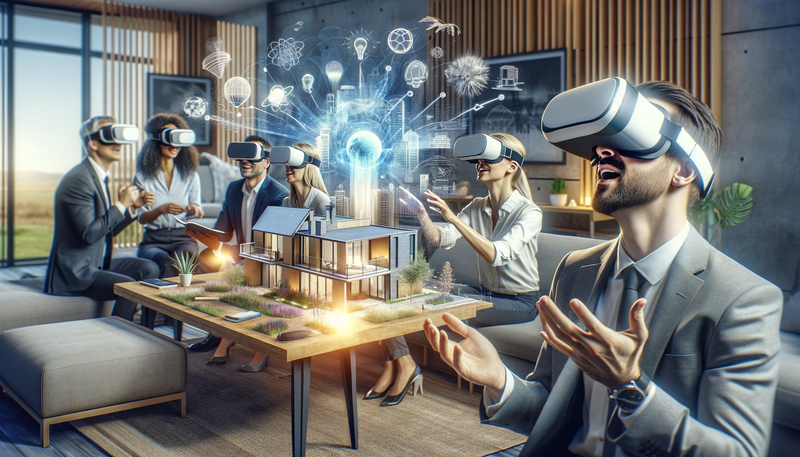
The way businesses and professionals present their work to clients has evolved with technology. While slideshows and 2D visuals have their place, 3D VR Panoramic Renderings offer a completely different level of engagement, captivating clients traditional methods simply can't. VR presentations become more than just visual aids; they turn into interactive experiences, offering clients the chance to explore, question, and visualize the end product or space.
This profound level of interaction leads to more engaged, invested, and ultimately, satisfied clients. The more a client can engage with a presentation, the better they understand the product or concept, reducing miscommunication and unmet expectations.
For instance, real estate firms integrating VR into their sales process have reported a dramatic increase in client engagement and satisfaction. One study showed that clients who toured properties using VR were 27% more likely to book a follow-up appointment and 17% more likely to make an offer compared to those who viewed properties through traditional methods.
Similarly, in the architecture sector, firms using VR presentations have successfully secured contracts because of their pitches' immersive, interactive nature. Clients can walk through buildings before they are even built, fostering a deeper emotional and intellectual connection to the project.
Both the cost savings and enhanced client engagement offered by 3D VR Panoramic Renderings highlight the technology's practical, bottom-line benefits. Companies and professionals willing to integrate VR into their workflows stand to gain both technologically economically and relationally.
Benefit #5: Interactive Features
One of the most distinguishing features of 3D VR Panoramic Renderings is the potential for user interactivity. Unlike traditional renderings or basic VR simulations, advanced VR panoramas can include interactive elements beyond simple navigation. Users can open doors, switch on lights, change furniture arrangements, and even adjust environmental variables like weather or time of day. The experience becomes less of a guided tour and more of an exploratory adventure, where the user is in control.
The implications of this interactive feature are significant for user engagement. Imagine a potential homebuyer not just walking through a 3D-rendered home, but also opening kitchen cabinets, turning on faucets, and even adjusting the colour of the walls to suit their taste. These interactive features add layers of realism and personalization that simply can't be achieved in a standard presentation, drawing users deeper into the experience and making them more invested in the outcome.
This level of interactivity can also be invaluable for market research and product development. Businesses can track which features users interact with the most, gaining insights into preferences and behaviours that can inform future designs or improvements.
Benefit #6: Better Training & Simulation
Using 3D VR Panoramic Renderings isn't limited to sales or design; it has profound applications in training and simulation across various industries. Take the medical field, for example. Surgeons can practice complex procedures in a risk-free virtual environment, complete with 360-degree views and interactive instruments, before performing them on actual patients. This immersive training can significantly improve skill levels and reduce the chances of errors.
Pilots in the aviation industry can engage in more realistic flight simulations using VR, offering a more comprehensive training experience than standard 2D simulators. Military training also employs VR panoramas for realistic battlefield simulations, allowing soldiers to practice strategies and maneuvers in a safe yet authentic environment.
The benefits of VR in these high-stakes professions go beyond skill enhancement; they also offer the potential for significant risk reduction. A mistake in a virtual operating room or simulated flight can be a valuable learning experience without dire consequences. This risk-free training environment allows for a level of experimentation and learning that is impossible to replicate in real-world conditions.
The interactive features and applications in training and simulation show the versatility and practicality of 3D VR Panoramic Renderings. Whether it's enhancing customer engagement or providing a safer, more effective training environment, the technology promises a host of benefits that are hard to ignore.
Benefit #7: Accessibility & Remote Viewing
In an increasingly interconnected world, the value of technology that breaks down geographical barriers cannot be overstated. One of the standout benefits of 3D VR Panoramic Renderings is the accessibility it offers through remote viewing. Unlike physical locations or models, a VR panorama can be experienced by anyone, anywhere, provided they have the hardware and software. This feature unlocks an enormous potential for global collaborations and remote engagements.
In business sectors such as real estate or international development, stakeholders from around the world can simultaneously "tour" a property or a project site without being physically present. Companies with global teams can collaborate on design projects in real time, navigating a common virtual space and deciding collectively. Educational institutions can offer remote but highly immersive campus tours to prospective students from different countries.
This level of accessibility is not just convenient; it's also cost-effective. Travel expenses and the time investment required for international collaborations can be significantly reduced, making projects more workable and profitable.
Benefit #8: Emotional Connection
Though often overlooked in discussions centred around technology, the emotional aspects of an experience can be potent driving forces behind decision-making. With its immersive qualities, VR has a unique capability to evoke strong emotional reactions that traditional viewing methods usually can't match. In 3D VR Panoramic Renderings, the viewer is not just a passive observer but an active participant, allowing for a deeper, more personal interaction with the environment.
This emotional engagement is critical in industries like real estate, where purchasing decisions often involve a considerable emotional investment alongside the financial one. Viewing a property in VR can offer the prospective buyer a visceral sense of "home," something that photographs or even video tours struggle to convey. They can envision their life within those walls, adding a compelling emotional layer to their decision-making process.
Similarly, retailers can create virtual showrooms where customers can "feel" the ambiance and layout, engendering a connection to the brand that might be challenging to establish through a standard web page. The nonprofit sector can use VR to generate empathy and urgency around social issues, providing a more emotionally resonant experience than traditional storytelling methods.
Both accessibility and emotional connection serve as pivotal benefits in adopting 3D VR Panoramic Renderings. They expand the technology's utility beyond mere visual appeal or interactive gimmicks, offering practical advantages that have far-reaching implications in various industries.
Benefit #9: Speed and Efficiency
In a business landscape where time is often as valuable as money, the speed and efficiency gains from using 3D VR Panoramic Renderings can be a significant competitive edge. By offering a fully immersive, interactive experience, VR enables stakeholders to quickly gain a clear, comprehensive understanding of a project or product, facilitating faster decision-making.
For instance, in property development, 3D VR can decimate the need for repeated site visits, which are time-consuming and logistically complicated. A detailed VR tour can often replace multiple preliminary site visits, allowing for quicker assessments and approvals. Similarly, product developers can get faster sign-offs from clients or senior management when everyone can "see" the final product in a realistic virtual environment, reducing the need for multiple reviews or mock-up alterations.
Benefit #10: Customization & Flexibility
One of the most compelling features of 3D VR Panoramic Renderings is their adaptability. While a pre-rendered VR environment is already interactive and immersive, the real magic happens when you add customization capabilities. Users aren't just passive recipients of a pre-determined experience; they can adjust and personalize the environment according to their preferences and needs.
Imagine a virtual car showroom where prospective buyers can customize car features in real-time, swapping out colours, wheel designs, or even interior finishes as they "walk" around the vehicle. Or consider an online furniture store that allows customers to place unique pieces in a virtual room, experimenting with layouts and styles before making a purchase decision.
This level of customization enhances user satisfaction and increases the likelihood of a successful transaction. A tailored experience allows users to deeply engage with a product or space, aligning it closely with their tastes and requirements. This sense of ownership over the experience is an often-overlooked benefit but one that can significantly impact the ultimate success of a project or product.
Both the speed and efficiency gains and the customization capabilities of 3D VR Panoramic Renderings point toward a future where this technology becomes a staple in various industries. By streamlining processes and making experiences more personally relevant.
, 3D VR Panoramic Renderings offer a holistic package of benefits that go far beyond the wow factor of high-tech visualizations. Businesses and organizations that harness these advantages stand not only to improve internal operations but also to offer a richer, more satisfying experience to their clients and stakeholders. In doing so, they elevate the standard for what is possible and expected in design, presentation, and user interaction.
Challenges and Considerations
As with any technology, it's important to acknowledge that 3D VR Panoramic Renderings have challenges and limitations. One of the primary considerations is the hardware requirement. To fully experience the potential of VR, users often need specialized headsets and potentially powerful computers, which may not be readily accessible or affordable for everyone.
The costs associated with creating high-quality VR panoramas can also be substantial, depending on the complexity and level of detail required. This investment may be prohibitive for smaller businesses or individual practitioners interested in incorporating VR into their operations.
There's a learning curve to consider. Navigating a VR environment may not be intuitive for all users, particularly those less tech-savvy. Businesses must often invest in training for both employees and clients with VR tools, adding another layer of cost and time to the process.
Conclusion
Despite the challenges and limitations, the benefits of 3D VR Panoramic Renderings in enhancing user engagement, facilitating decision-making, improving training, and opening up new possibilities for remote collaboration are far too significant to overlook. As we have outlined, the advantages span across industries—from real estate and retail to medical training and global development projects.
Looking to the future, it's plausible to speculate that VR technology will continue to evolve and permeate various sectors, further revolutionizing how we interact with spaces and objects. Advances in hardware and software will probably make VR more accessible and affordable, opening up opportunities for even smaller businesses to capitalize on its benefits.
With the growing integration of Artificial Intelligence and advancements in haptic feedback, future versions of VR could offer even more realistic and personalized experiences, amplifying the already considerable benefits. In a rapidly embracing digital transformation, 3D VR Panoramic Renderings stand out as a groundbreaking technology with the potential to reshape industries and redefine best practices.
Our Services
View some of our most popular services below.











